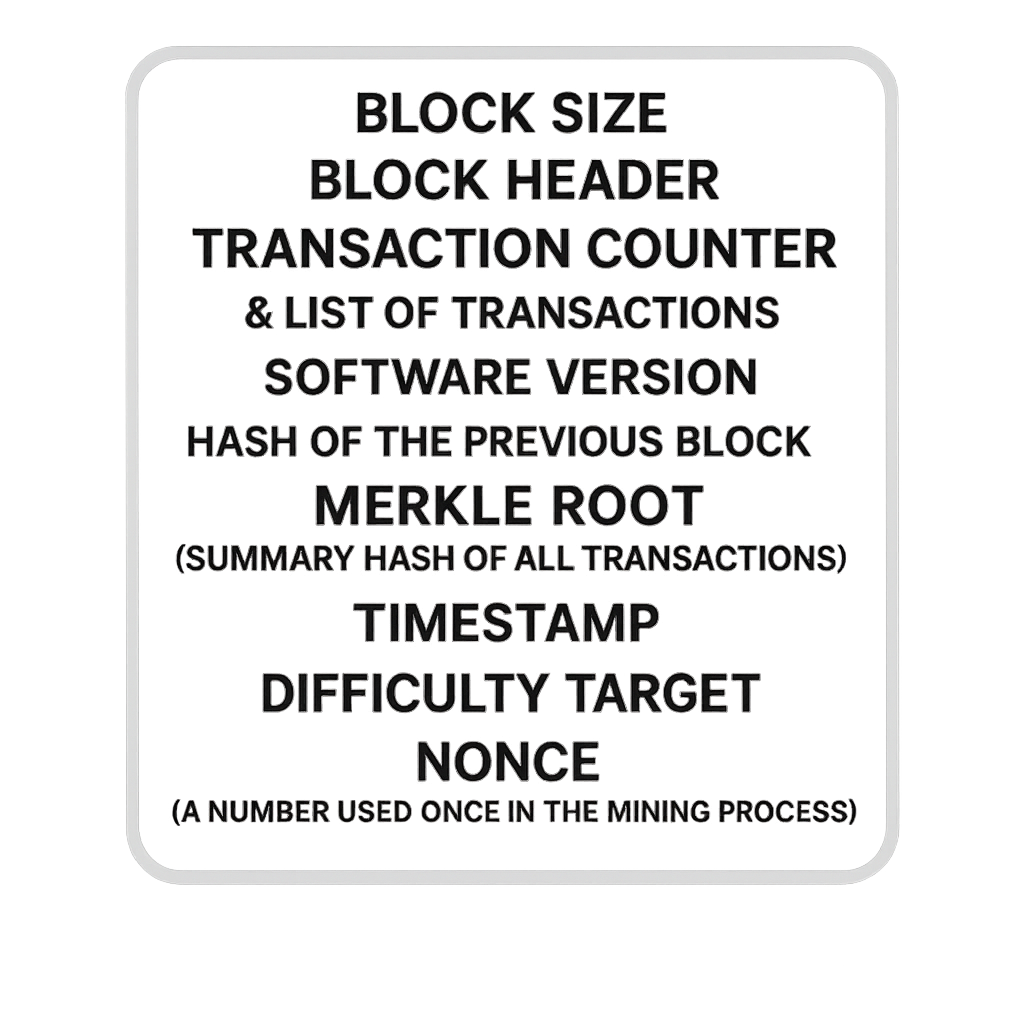Welcome to TechUnder5 — where tech meets simplicity in just under 5 minutes!
In this post, we’ll break down one of the most important ideas in blockchain technology: Proof of Work.
It’s the system that keeps Bitcoin and many other cryptocurrencies secure, decentralized, and running without a central authority.
Table of Contents
- What is Proof of Work?
- Why Blockchains Need Proof of Work
- How Proof of Work Mining Works
- The “Puzzle” Explained
- Difficulty & Fairness
- Security Benefits
- Drawbacks of Proof of Work
- Conclusion
What is Proof of Work?
Blockchain networks rely on consensus algorithms to ensure agreement on the validity of transactions before they are added to the blockchain. For a new block to be appended to the chain, all participating nodes must reach consensus and validate the transactions it contains. These consensus algorithms form the foundation of trust and coordination in a decentralized environment. One of the earliest and most widely used consensus mechanisms is Proof of Work (PoW).
In PoW, participants called miners compete to solve a complex mathematical puzzle. The first miner to solve it gets to:
- Add the next block of transactions to the blockchain
- Earn a reward (like new Bitcoins or transaction fees)
This “work” is proof that the miner spent real computing power to secure the network.
Why Blockchains Need Proof of Work
Without a system like PoW, anyone could create fake transactions or rewrite history on the blockchain.
PoW solves this by:
- Making cheating expensive — you’d need massive computing power to outcompete the rest of the network.
- Rewarding honest behavior — miners earn rewards only when they follow the rules.
- Removing the need for trust — you don’t have to trust other participants, only the math and protocol rules.
How Proof of Work Mining Works
-
Objective of Proof of Work Under the Proof of Work (PoW) algorithm, the primary goal is to create a new block that will be appended to the blockchain. This block contains all valid transactions that have occurred on the network during a given time frame.
-
Role of Participants (Nodes/Miners) Network participants, known as nodes or miners, compete to verify transactions and assemble them into a candidate block. Before block creation begins, all transactions first enter a mempool (memory pool). Each miner then prepares a candidate block containing:

-
The Mining Competition PoW requires miners to solve a complex cryptographic puzzle. The challenge is to find a hash value for the candidate block that is less than the difficulty target set by the network. This is achieved by altering the nonce repeatedly and hashing the block’s data using the SHA-256 algorithm until the result meets the required target. The first miner to solve the puzzle earns the right to publish their candidate block to the network and receives a block reward (newly minted cryptocurrency plus transaction fees).
-
Validating the Winning Block Once a block is successfully mined and broadcast to the network, all other miners stop working on their current block and begin mining on top of the newly created one. This involves verifying its transactions and securing it deeper into the blockchain, making it extremely difficult to alter. This stage is where consensus is reached—when the majority of participants agree that the block and its transactions are valid.

- Energy and Probability Considerations PoW is an energy-intensive process because miners are effectively performing a brute-force search for the correct nonce. While miners with greater computational power have a higher probability of finding a valid hash quickly (since they can test more nonce values in parallel), the process remains probabilistic—smaller miners can still “win” and find the correct nonce, much like hitting a lottery jackpot.
The “Puzzle” Explained
The PoW puzzle is finding a hash (a unique digital fingerprint) for the block that meets certain difficulty requirements.
Because hashes are unpredictable, the only way to find the right one is to keep guessing — billions or trillions of times — until you succeed.
Why it matters:
-Prevents spam and fake blocks (Sybil resistance) Proof of Work makes it computationally expensive to add new blocks. An attacker would need to invest significant resources in hardware and electricity to flood the network with fraudulent blocks. This cost barrier deters spam and protects the blockchain from Sybil attacks, where a single entity creates multiple fake identities to take over the network.
-Makes rewriting history extremely costly Every block in the blockchain is linked to the one before it through cryptographic hashes. To alter a past transaction, an attacker would need to re-mine not only that block but all subsequent blocks — each requiring the same amount of computational effort as the original. On a large, active network, this becomes prohibitively expensive and practically impossible.
-Ensures block creation is competitive but fair Mining under PoW is like a global lottery. Anyone with the necessary equipment can participate, and while having more computational power increases your chances of winning, it doesn’t guarantee success. This probabilistic nature ensures that no single miner or group can consistently dominate the block creation process without enormous investment, maintaining fairness in block production.
Difficulty & Fairness
The difficulty adjusts automatically so that blocks are found at a steady rate (e.g., ~10 minutes for Bitcoin).
This means:
- If more miners join, puzzles get harder.
- If miners leave, puzzles get easier.
Fairness comes from the fact that anyone with enough computing power can mine, but those with more power have a better chance — like buying more tickets in a lottery.
Security Benefits
Proof of Work is considered highly secure because:
- An attacker would need over 50% of the network’s total computing power to take over (a 51% attack).
- Changing even one transaction would require re-mining all blocks after it — practically impossible on a large network.
- The cost of attack is usually higher than any potential reward.
Drawbacks of Proof of Work
While secure, PoW has some downsides:
- Energy Consumption – Mining uses large amounts of electricity.
- Hardware Centralization – Specialized mining rigs (ASICs) can give an advantage to wealthy participants.
- Transaction Speed – PoW networks are often slower compared to some newer consensus mechanisms.
Conclusion
Proof of Work is the foundation of Bitcoin and many other cryptocurrencies.
It replaces trust in people with trust in math, making blockchains secure, transparent, and censorship-resistant.
While newer consensus models like Proof of Stake are emerging, PoW remains a proven and battle-tested way to protect decentralized networks.
TechUnder5 — Making complex tech simple.
